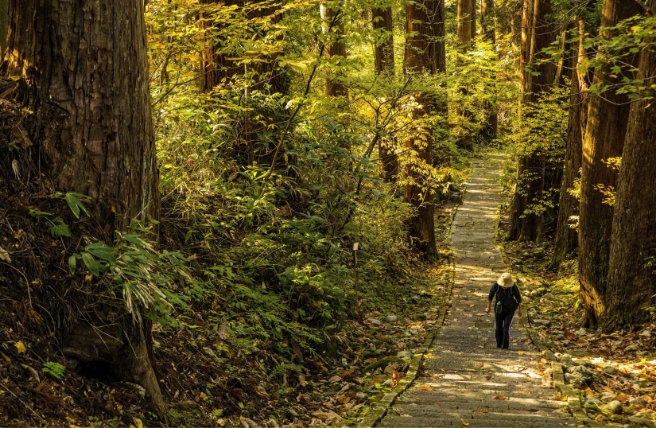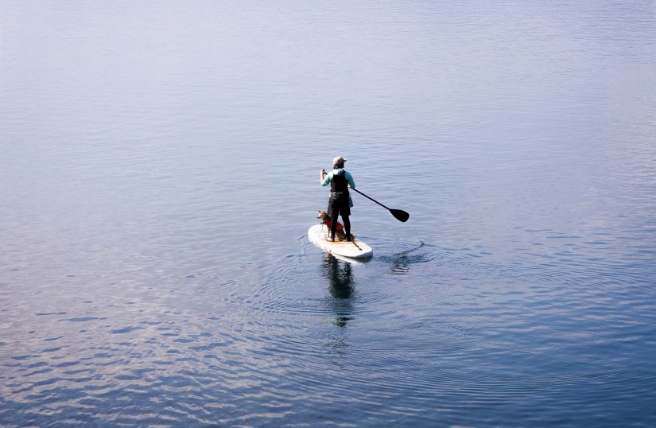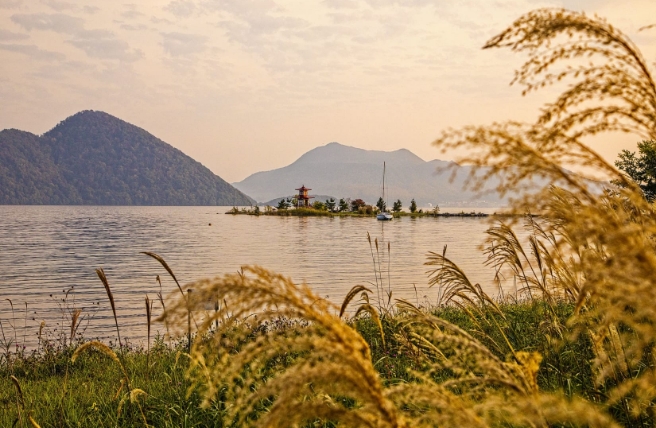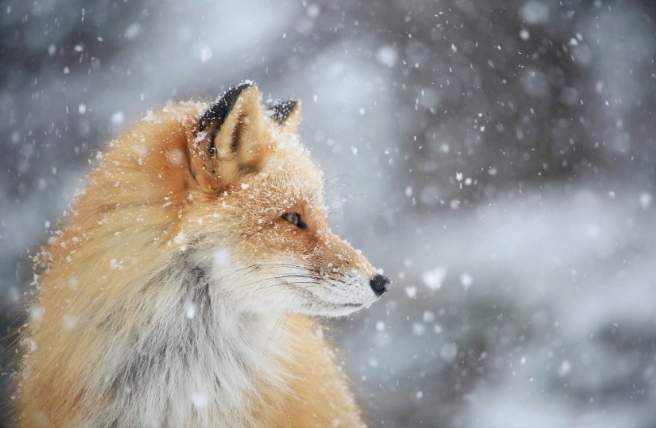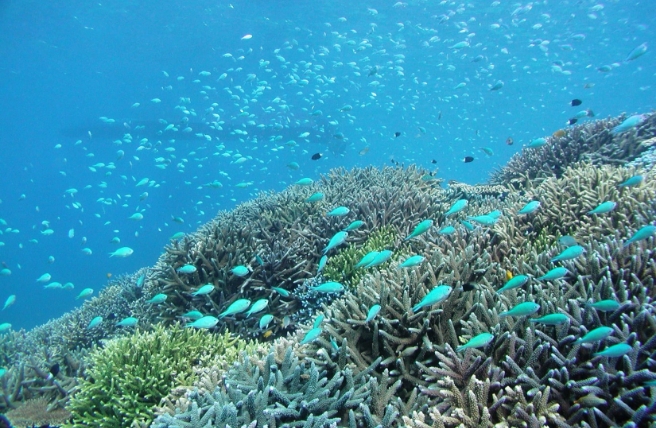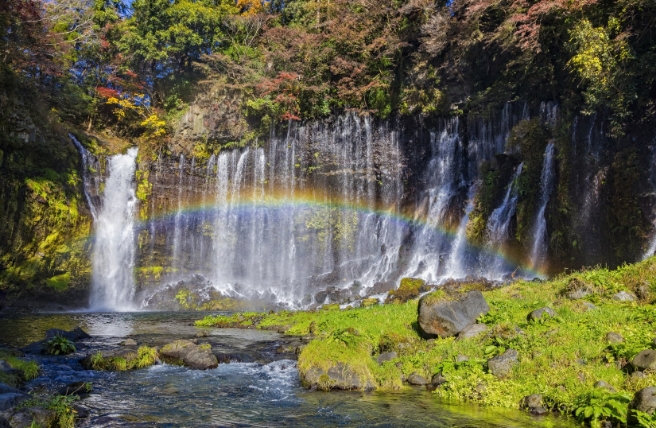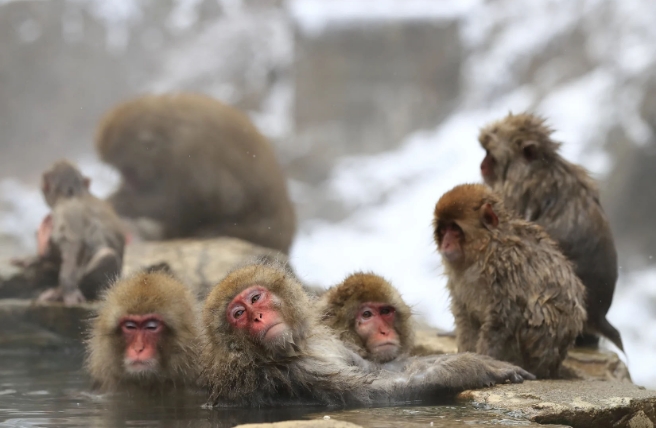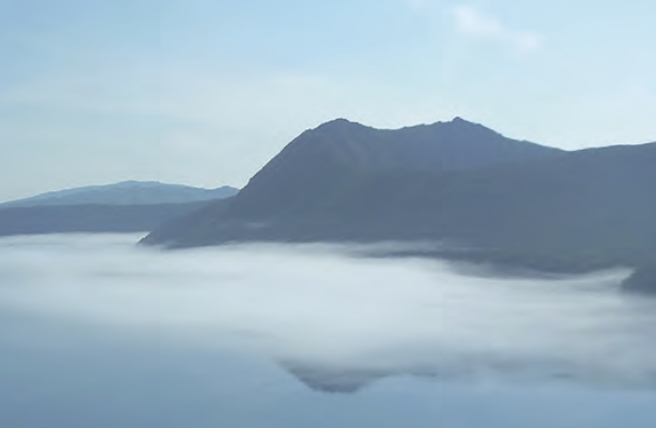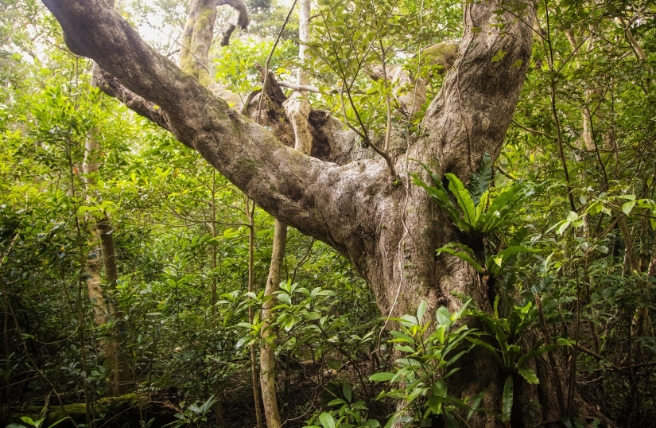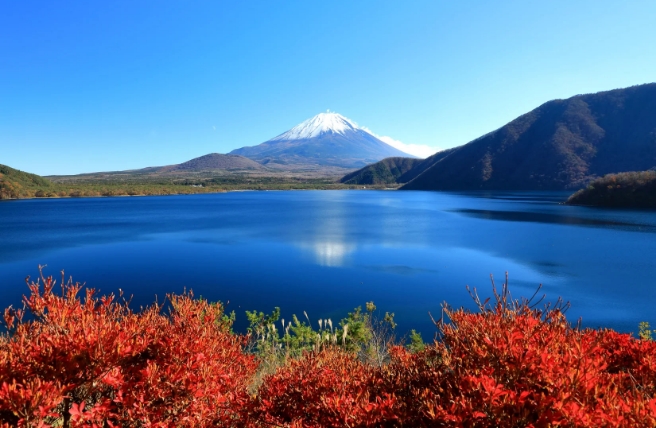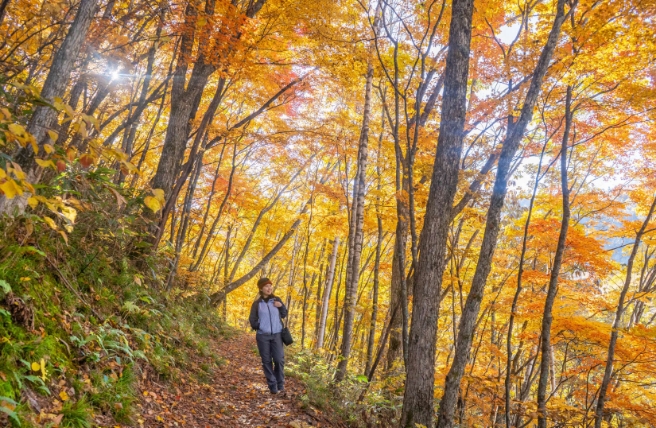
Experience the volcanic landscapes of Japan’s national parks through fun and physical activities
Hokkaido
Akan-Mashu National Park was formed by volcanic activity spanning as far back as about 150,000 years and is famous for its three calderas and their lakes—Akan, Mashu, and Kussharo. The ten peaks that make up the Akan Volcanic Complex offer spectacular views of the surrounding lakes, particularly from the summit of Mount Meakan.
Lake Kussharo is one of Japan’s largest caldera lakes with a circumference of 57 kilometers. It is a popular place for walking with numerous nature trails along the shoreline and hiking trails into the surrounding mountains. You could easily spend several days canoeing, hiking, and connecting with the local culture. On a guided trek to Mount Io, literally “sulfur mountain,” you get to explore the otherworldly landscape of bright yellow sulfur deposits and smoking fumaroles.
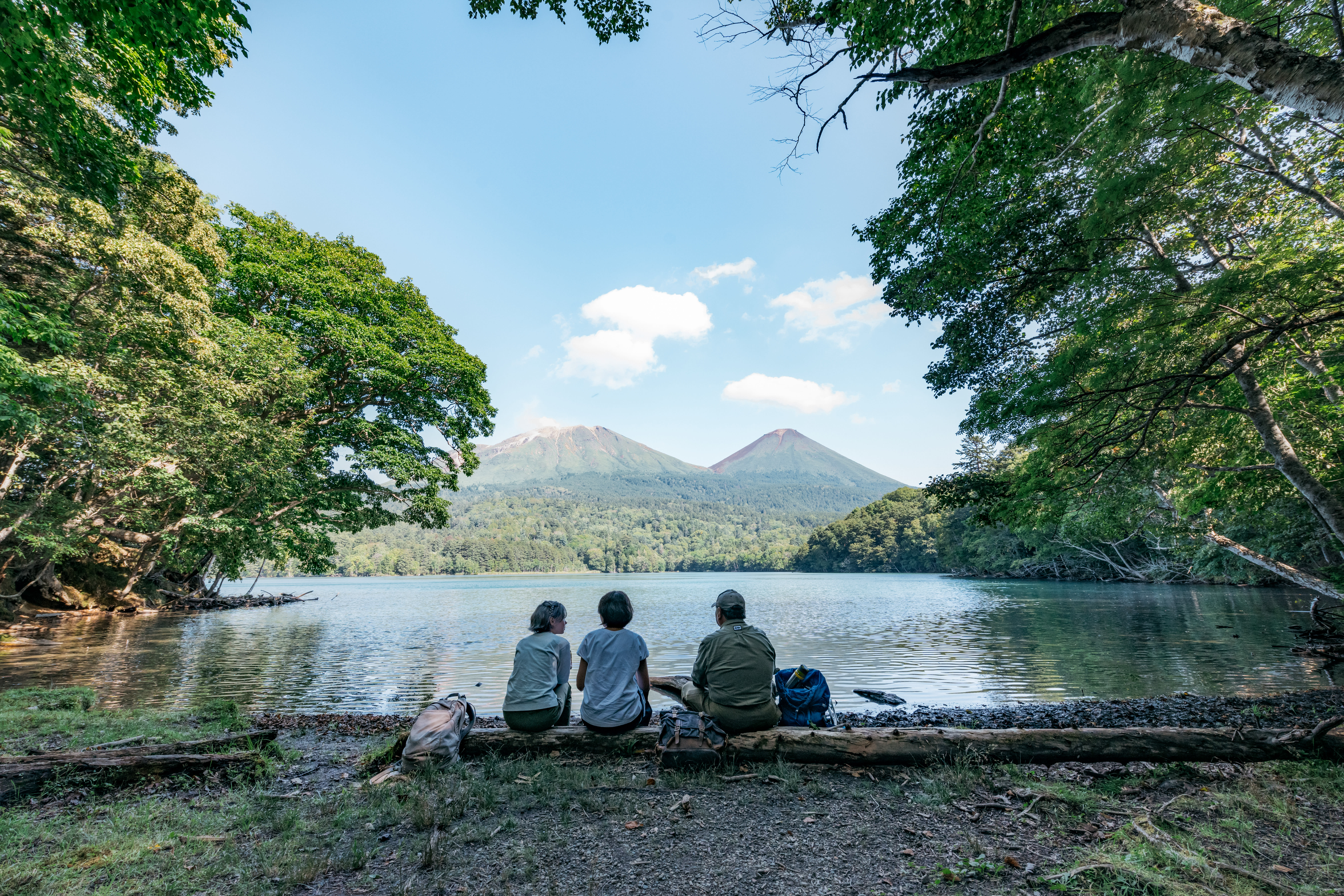
There are plenty of scenic views of Mount Akan-Fuji and Mount Meakan in Akan-Mashu National Park
Daisetsuzan National Park is Japan’s largest national park (2,268 square kilometers) and offers activities for intrepid adventurers and leisurely hikers. Thrill seekers can take whitewater river rafting tours along the Ishikari River and its tributaries. Depending on the route, you may pass through Sounkyo Gorge with its impressive columnar jointing which is the result of an eruption 30,000 years ago. Those who are looking for a drier and more relaxing experience can take a walk among the moss forests around Lake Shikaribetsu.
In Shikotsu-Toya National Park, Lake Toya is a caldera lake with a mountainous island at its center. The island was formed around 50,000 years ago due to volcanic activity. Today it is forested with giant spruce and inhabited by deer. Gentle wood-chipped hiking trails suitable for all ages lead around the island and offer an insight into the volcanic lake environment. The Toyako Visitor Center and Volcano Science Museum on the southern lakeshore serves to highlight the power of the natural world. Take a guided tour to learn about the eruptions of two lakeside volcanoes—Mount Usuzan and Mount Nishiyama—in 2000 which destroyed the area’s infrastructure and forced the evacuation of approximately 16,000 people. To cover the main sights and attractions around Lake Toya, consider a 2-night, 3-day stay in the park.
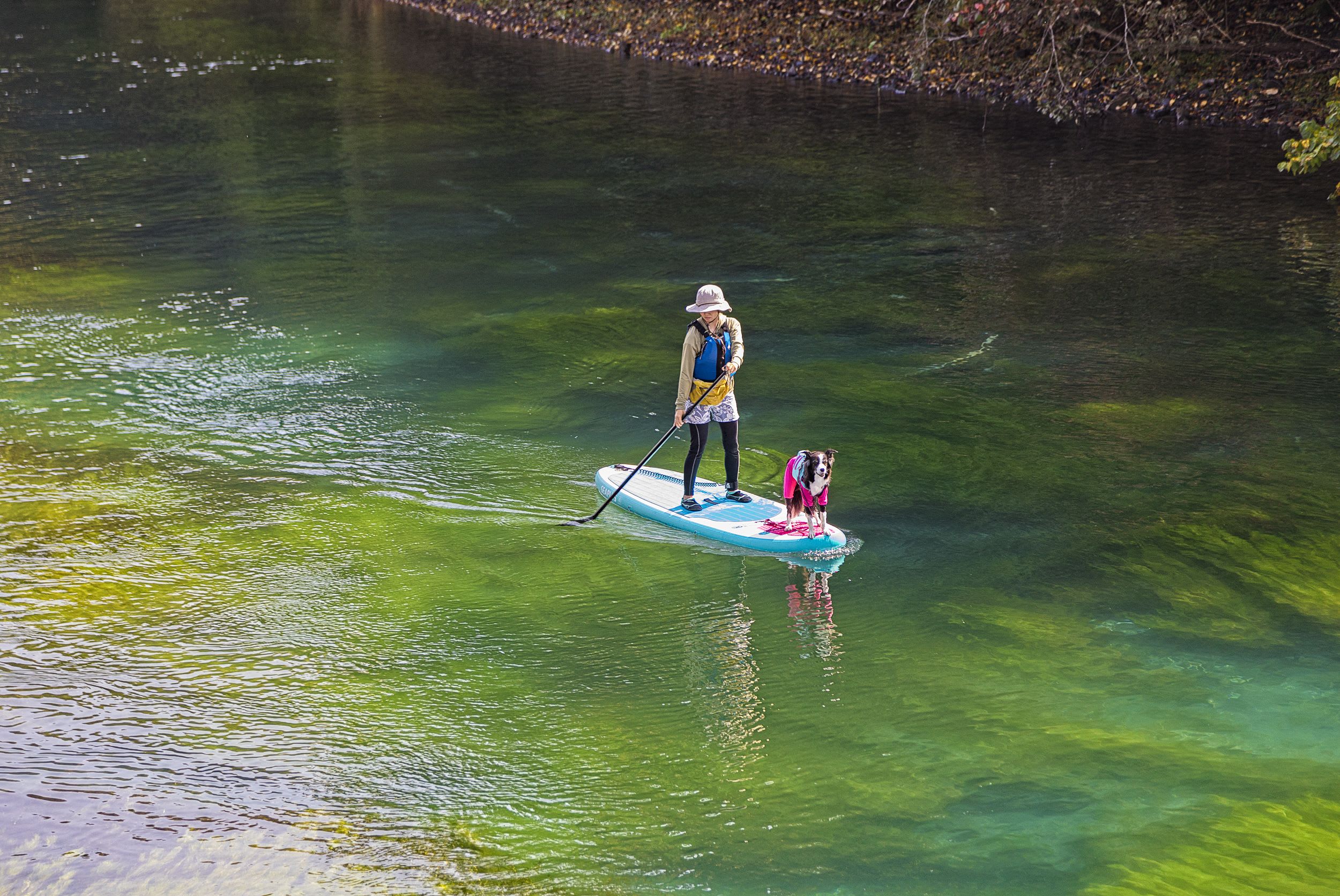
SUP is a popular activity in the caldera lakes of Shikotsu-Toya National Park
Tohoku
There are many volcanoes within Towada-Hachimantai National Park. Explore the park’s diverse ecosystems on the Mount Hachimantai Nature Trail and take in striking vistas of ponds and marshes formed through volcanic activity, from slopes covered in alpine flora. The rocky terrain of Mount Iwate’s northeastern slope offers a contrast to the verdant slopes of Mount Hachimantai. A 1-kilometer route known as the Yakehashiri Lava Flow Trail leads through lava fields still barren almost 300 years after the eruption that produced them.
Guided canoe tours on Lake Towada offer opportunities to relax in the serene waters of a rare dual crater lake. The Canadian canoes can safely be piloted by beginners, making the natural and geologically unique beauty of the double caldera lake accessible to all.
In the winter, the healing hot springs of Sukayu Onsen are the perfect place to rejuvenate your body after a day of hitting the fresh powder of the Hakkoda Mountains. In the Goshogake Onsen area in the southern part of the park you can get an exciting introduction of volcanic activity on a snowshoe tour. Highlights of the tour include up-close views of the sulfur-spewing fumaroles of Daideikazan Mud Volcano.
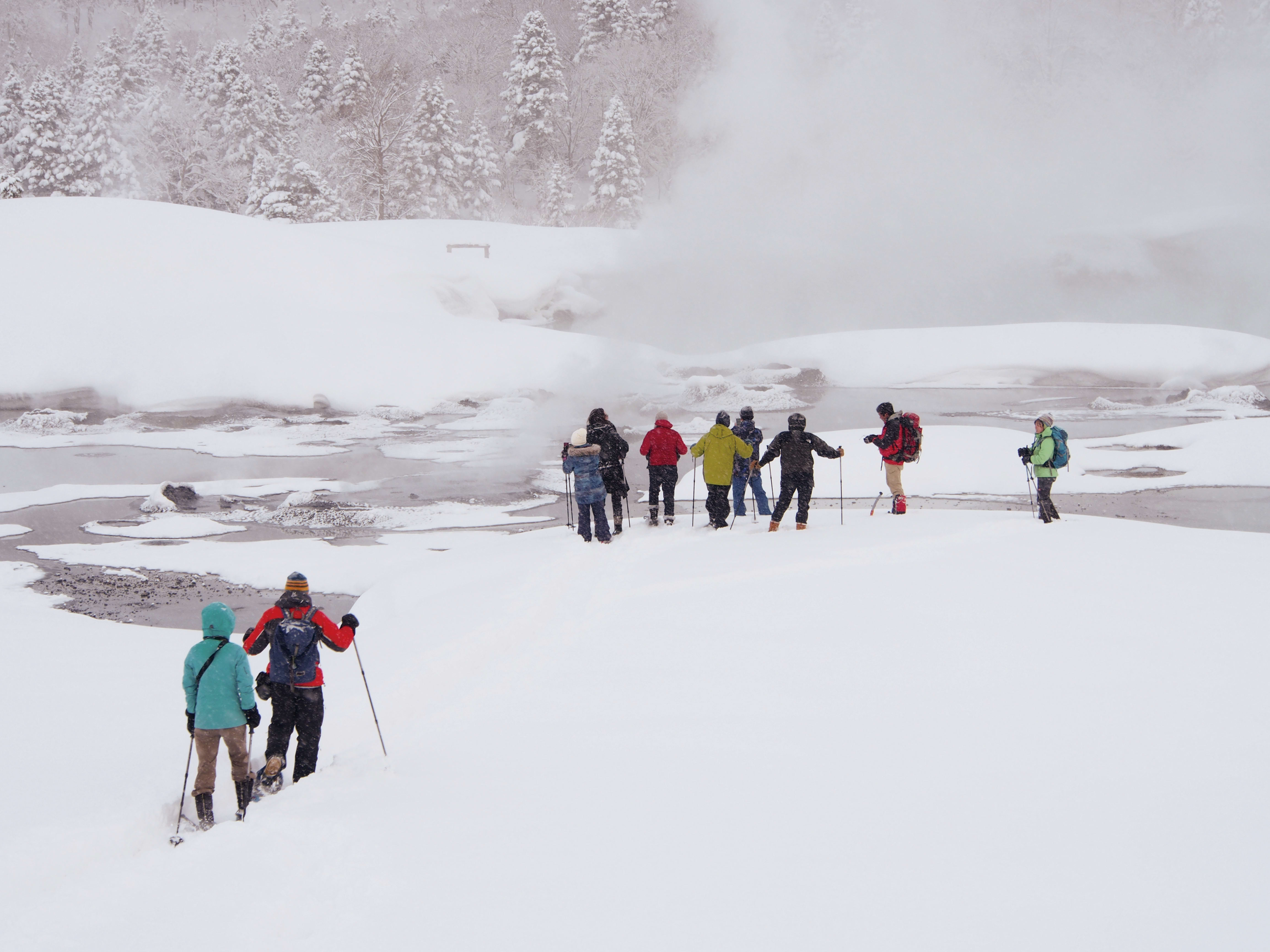
Guided snowshoe tours are the only way to see volcanic phenomena up close in the winter
Head a little southward to explore the art and nature of Bandai-Asahi National Park and learn how the people have not only coped, but thrived in the volatile area, harnessing volcanic power both literally, using hot springs as a source of renewable energy, and figuratively, through the artistic expression of bonsai cultivation.
Alternatively, rent a car to drive above the clouds at 1,600 meters on the Bandai-Azuma Skyline. This scenic route takes you through the ragged peaks and ravines of the volcanic Azuma mountain range and is open from mid-April to mid-November, offering views of snow corridors in the spring and fiery red foliage in the autumn.

The Bandai-Azuma Skyline affords stunning vistas between spring and autumn
Kanto and Hokuriku
While Mount Fuji might be the most famous volcano in the area, the Kanto and Hokuriku regions are home to a wide variety of volcanic landscapes and activities. A hike around the rim of the 400,000-year-old Hakone Caldera takes you through Hakone Ashinoko Observation Park, Mount Marutake, Mount Nagao, and Mount Kintoki, offering splendid views of Fuji-Hakone-Izu National Park, and iconic Mount Fuji when the weather is clear.
Izu Oshima is a young and active volcanic island located within Fuji-Hakone-Izu National Park. Its black sand “desert” and other unique geographical features can be explored with an expert guide.
Nikko Toshogu Shrine veiled within the mists of Nikko's Kirifuri Highland is a popular excursion from Tokyo, but you would be remiss to not also explore the spectacular lakes, marshes, and waterfalls of Nikko National Park. The landscapes shaped by hundreds of thousands of years of volcanic activity are an atmospheric setting for experiencing ascetic Shugendo rituals.
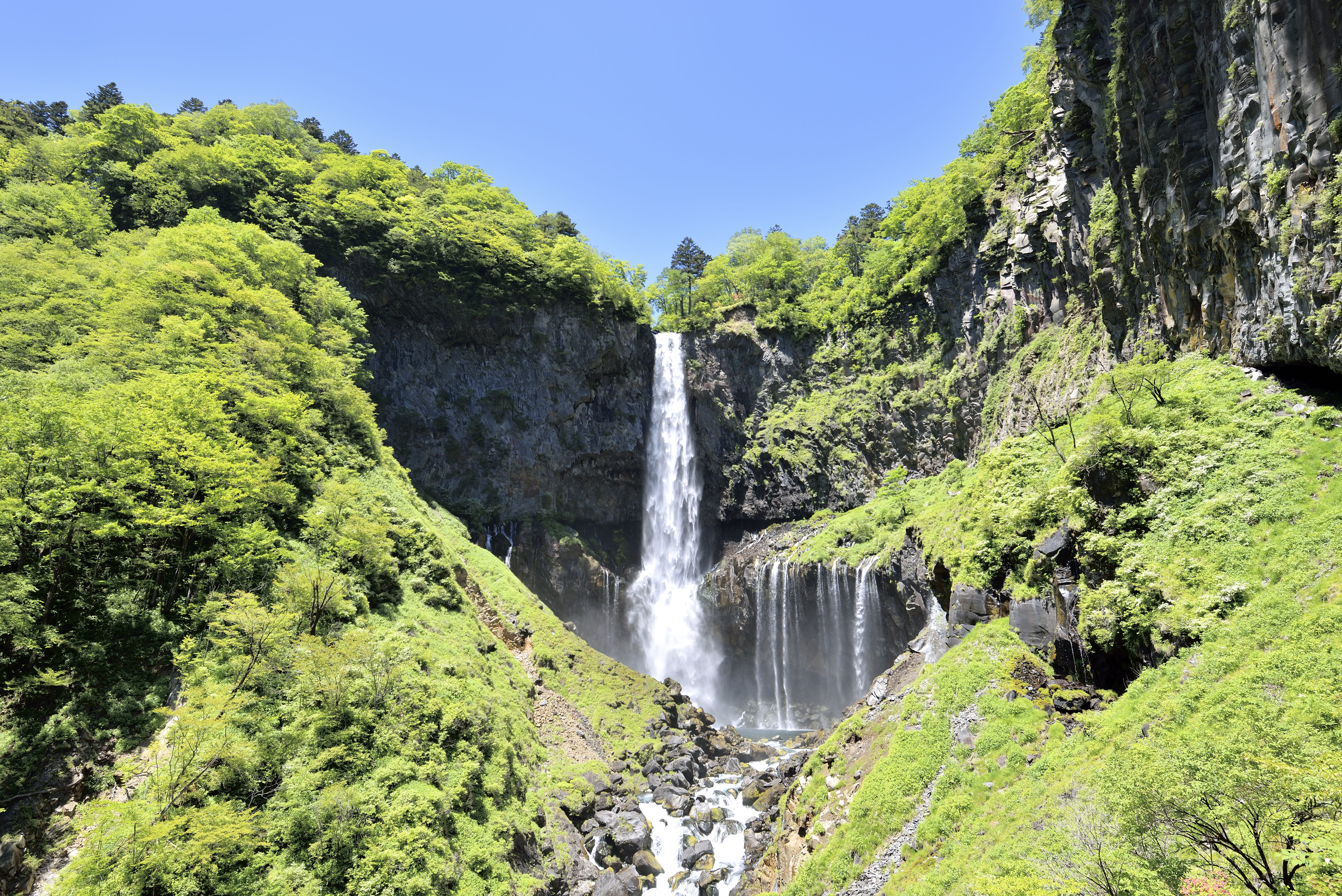
The almost 100m Kegon-no-Taki Waterfall is one of the most famous waterfalls in Nikko
A gondola ride up the Nasu Ropeway offers spectacular views and easy access to Mount Chausu’s active crater. From there, you can continue onto a 50-minute climb to the summit or opt to relax in one of the hot springs on the mountainside near the ropeway station.
Joshin'etsukogen National Park is known for its wild Japanese macaques that bathe in its hot springs, but there are human-friendly options in the area as well. On the other side of Shiga Highland, Kusatsu Onsen has been a popular hot spring site for centuries, known for its mineral-rich restorative waters. Budget three days to explore these and other highlights of the park.
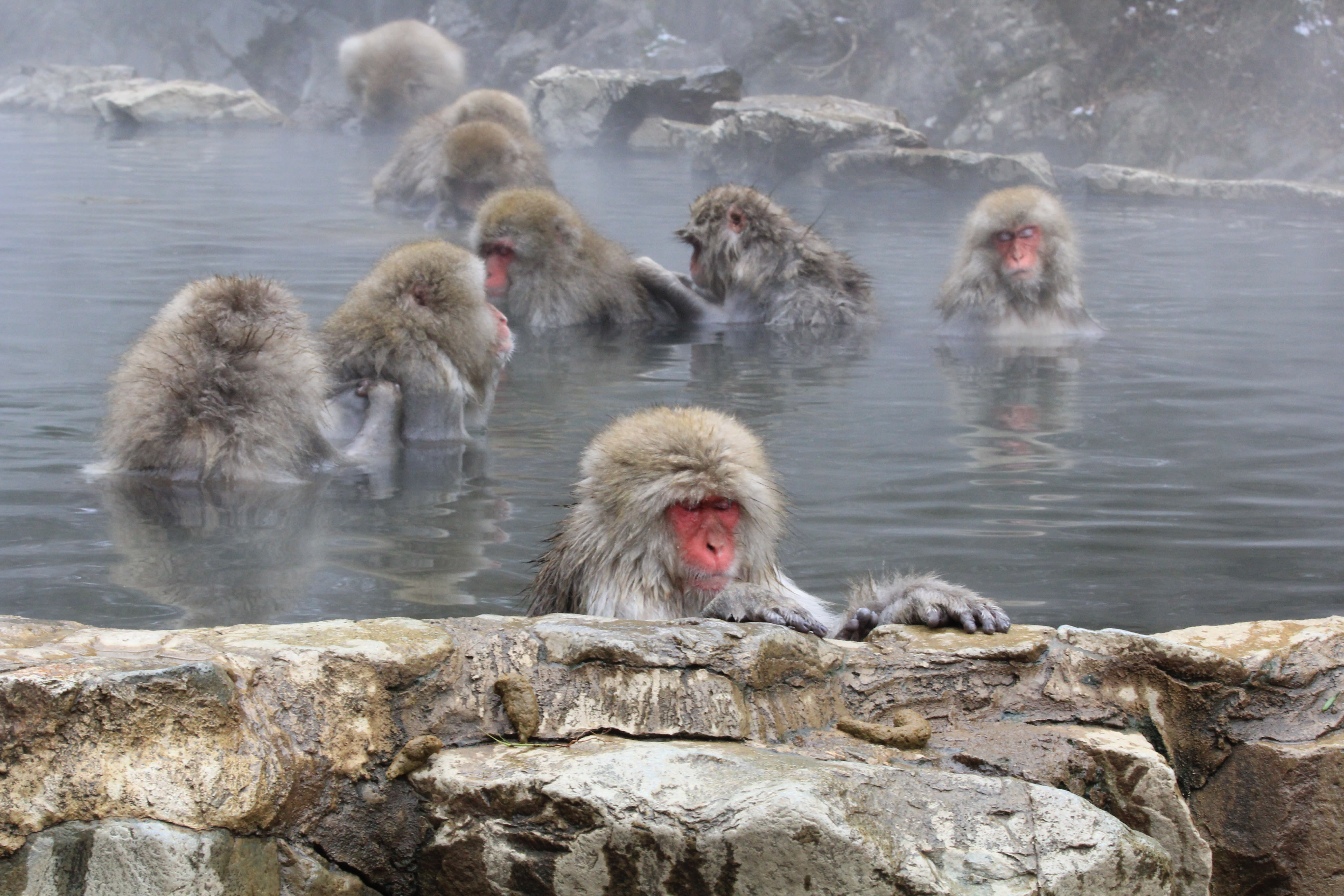
Observe the fascinating social structure of the monkeys as they bathe in the hot springs at Jigokudani Yaen Koen
Chugoku and Kansai
Stretching from Tottori to Kyoto, San’inkaigan National Park runs continuously along the Sea of Japan Coast. The coastline features cliffs, caves, and other formations produced by volcanic activity and tectonic movements.
Genbudo Cave Park offers essential insight into the region’s volcanic past. Its five caves, which formed 1.6 million years ago, are distinguished by hexagonal columnar jointing; magma from volcanic eruptions that cooled, contracted, and developed vertical cracks. The site played a significant role in the discovery of geomagnetic reversal. In 1926, it was discovered that the polar magnetic alignment of the basalt (volcanic rock) in the area was the opposite of Earth’s current magnetic polarity, indicating that the Earth had experienced a reversal of magnetic polarity during the formation of the basalt.

The rock formations of Genbudo Cave almost look alive in the way they twist and turn
The dramatic natural scenery of Daisen-Oki National Park is home to the sacred. This region serves as an important setting for numerous Japanese myths. Many of its locations appear in the eighth-century “Kojiki” and “Nihonshoki” texts, Japan’s oldest chronicles, and are sacred sites and places of pilgrimage even today. The caves of Kaka, which supposedly hide the opening to the underworld, can be explored by boat, and the sandy shore near Izumo Grand Shrine is where Shinto deities are said to gather once a year in autumn.
The Oki Islands in the Sea of Japan were formed by volcanic activity around six million years ago. The mountainous terrain of the islands boasts striking geological features such as the 40-meter Dangyo-no-taki Waterfalls which can be explored on guided tours.

Chichisugi is a sacred 800-year-old cedar found in the dense forest of Mount Daimanji on the Oki Islands
Kyushu
Located on the west side of the southern Island of Kyushu, Unzen-Amakusa National Park is famous for Mount Unzen. The Unzen area of the park straddles a geological fault line, and the namesake volcano continues to shape the Shimabara Peninsula where it is located. Mount Unzen was responsible for a major volcanic disaster in 1792. Its eruption triggered a destructive landslide and tsunami, resulting in the estimated deaths of 15,000 people.
Despite its fearsome reputation, the volcano and its surrounding area is a place of astounding beauty and opportunities for self-care. In between relaxing at Unzen’s hot springs, take the time to explore the area’s 1300-year history or enjoy a ride on the Unzen Ropeway for scenic vistas of the area. The Amakusa area of the park offers marine activities, such as kayaking and paddleboarding.

The Unzen Ropeway is a great way to get fantastic views of the surrounding nature
Mount Aso in Aso-Kuju National Park is one of the world’s largest calderas (380 square kilometers) and home to the Aso grasslands. While the grasslands of the caldera can be explored on foot or bike, consider taking to the skies for the best views. Choices range from paragliding or hot air ballooning for the most intrepid, a helicopter ride for the most direct, and finally drone piloting for those who prefer their feet on terra firma but still want to capture incredible aerial shots.
At the very south is Kirishima-Kinkowan National Park, home to Mount Sakurajima, one of the more active volcanoes in Japan. While its smoking crater can be viewed from the sky, a kayak tour can offer a more intimate and involved experience. From the southernmost train station in Japan, enjoy a nature walk through the shores and flower fields created by Mount Kaimon and appreciate the life-giving power of volcanoes.
